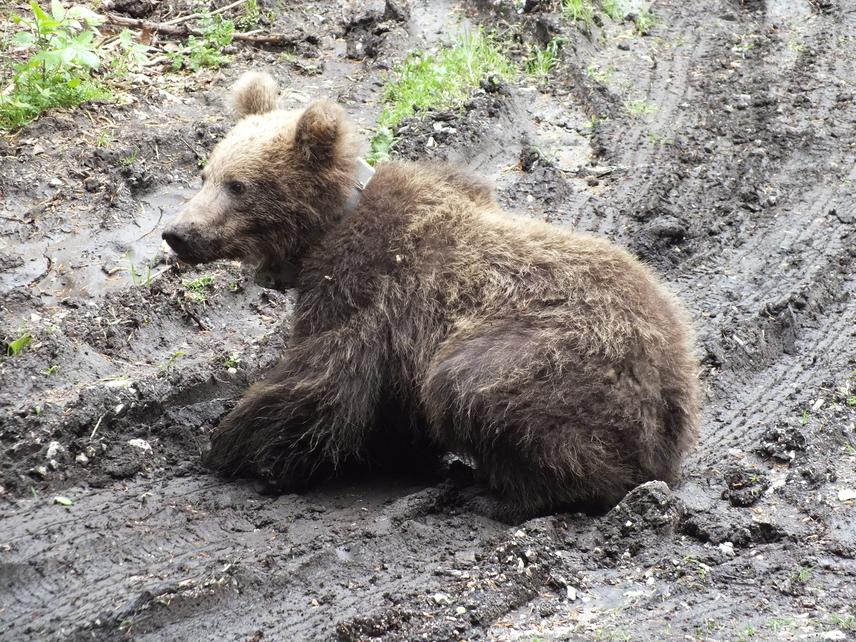Marija Spasić
The brown bear (Ursus arctos) is the largest mammal species in Europe. Bears from Serbia belong to three different European populations: at the west and south- west part to Dinaric-Pindos population, at the north-east to Carpathian population and at the east to Eastern Balkan population. Recent population monitoring includes only area of NP Tara in western Serbia. Until now rest of distribution of Dinaric population was not monitored. The goal of this project is to capture, collar and track movement of a bear at the edge of its Serbian distribution.

The main goal of the project is to safely capture collar and track movement in next two year of a bear at the edge of Dinaric distribution, and in the transborder zone between Serbia and neighbouring Montenegro. During project activities a bear will be captured and collared with GPS/GSM collar which will allow us to track its movement in the next two years. All field activities will be conducted at feeding sites in the forested mountain area of Southwestern Serbia - Jadovnik and Zlatar mountains (1200-1500 masl). In the order to prepare capturing bears will be attracted with food (mainly corn and carcases) at three feeding sites in this area. Visiting of feeding site and frequency of bear’s presence will be monitored with camera trap and different sings (feces, foot prints, scratched trees etc). Monitoring at feeding site will be use for identify directions (coming or leaving) which is very important for successful trapping. In mean time collar must be order from producer. According presence and local weather conditions exact time of capturing will be selected in the period of late May- Jun. Tapping of bear will be done by Aldrich traps. Several traps will be set up at feeding site. After capturing a bear will be collared with GPS/GSM collars made by Vectronic Aerospace (Berlin, Germany). In the order to implement collaring of bear, trapped animal will be tranquilized using injection rifle. After the bear will be collar his movement will be tracked using by GPS+ software, and images of his movement will be present at the maps (Google Earth and/or OziExplorep). The project will last 14 months (until end of May 2018).
Except main goal the fallowing overall and long-term goals are:
• Increase of general knowledge of brown bear ecology in Serbia
• Identification of home range in area at the border of Dinaric distribution
• Seasonal variation in size of home range
• Variation of day/night, seasonal activity
• Hibernation and den selectivity
• Monitoring of transboundary activity and habitat preferences at the edge of distribution
• Continue efforts in national monitoring and tracking movement of brown bears in Serbia
• Contribution to knowledge of corridors between subpopulations and between countries (Serbia and Montenegro)
• Contribution to assessment of recent status of Dinaric brown bear population in Serbia
• Contribution to species recovery in Serbia
• Maintenance of efforts for establishing National Action and Management Plans